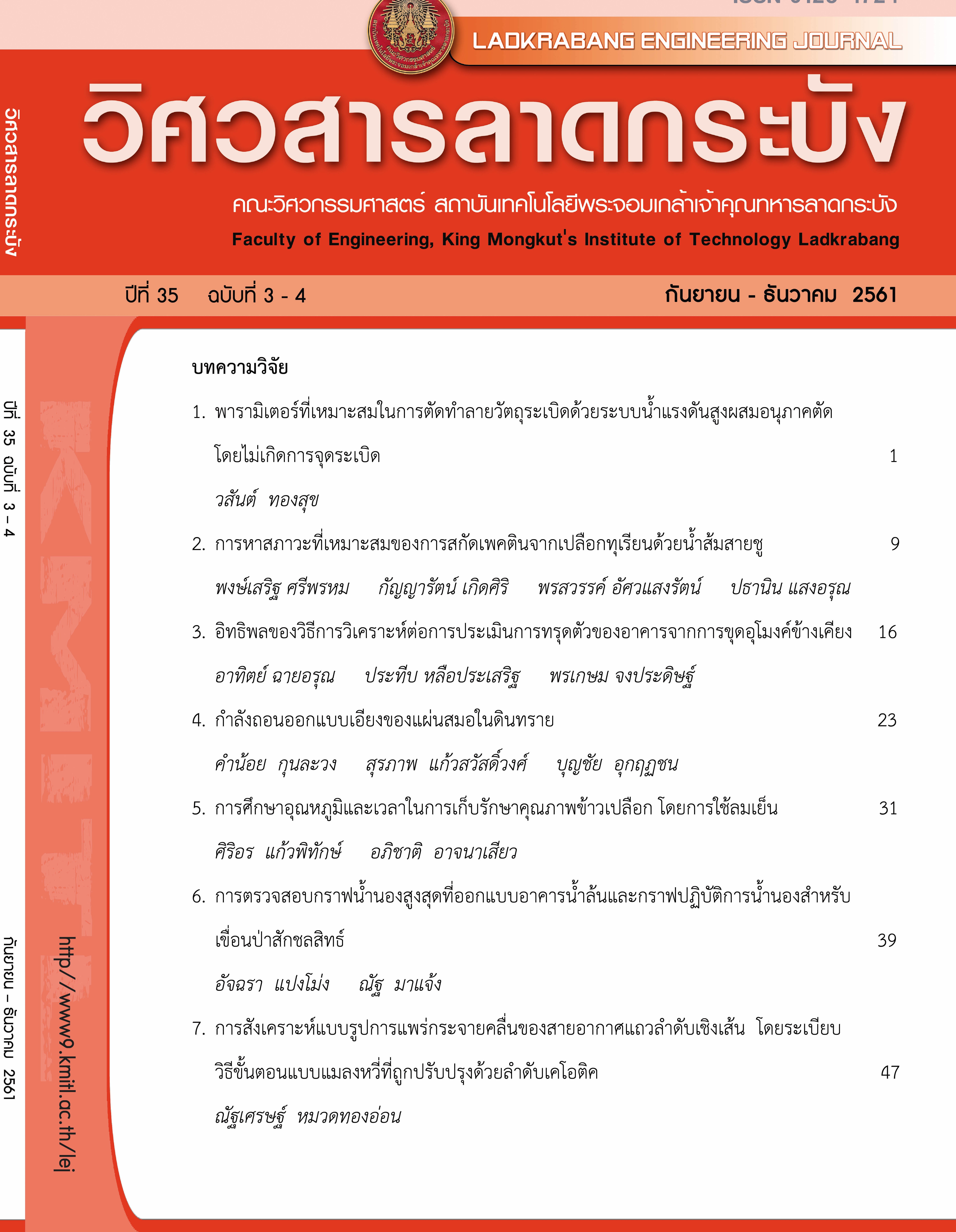Influence of analysis method on evaluation of building settlement due to neighboring tunnel construction
Keywords:
Tunnel excavation, Numerical analysis, Interaction, Finite element, Pile supported structureAbstract
In dense urban areas, the tunnel construction close to the existing buildings becomes unavoidable. The excavation affects settlements of the buildings and may cause structural damage. Therefore, proper evaluation of this impact is necessary. In the current engineering practice, there are various methods with different degree of complexity to compute the building settlements due to adjacent tunneling. Each method provides different results in terms of both settlement magnitude and behavior. This study compares and discusses the computed results of pile settlements due to nearby tunneling from four different analysis methods. These includes 1) green field settlement prediction using Gaussian curve; 2) green field settlement by finite element method (FEM); 3) settlement of piles embedded in ground by FEM and 4) settlement of piles under loading by FEM. The results indicated that the most complicated method which considers the piles under loading provides satisfactory behavior and results as the pile settlements in transverse and longitudinal directions become maximum. However, simpler methods may be used, depending on the relative position between the tunnel and pile.
References
A. Sirivachiraporn and N. Phienwej, “Ground movements in EPB shield tunneling of Bangkok subway project and impacts on adjacent buildings,” Tunnelling and Underground Space Technology, vol. 30, pp. 10–24, 2012.
P. Jongpradist and S. Suwansawat, “Ground response due to tunneling in soft ground and its impact to nearby existing structures,” EIT tunnel seminar, 2017.
B. M. D. Boscardin and E. J. Cording, “Building response to excavation-induced settlement,” Journal of Geotechnical Engineering, vol. 115, pp. 1–21, 1989.
N. Loganathan and H. G. Poulos, “Analytical Prediction for Tunneling-Induced Ground Movements in Clays,” Journal of Geotechnical and Geoenvironmental Engineering, vol. 124, pp. 846–856, 1998.
E. Bilotta, A. Paolillo, G. Russo, S. Aversa, “Displacements induced by tunnelling under a historical building,” Tunnelling and Underground Space Technology, vol. 61, pp. 221–232, 2017.
A. Mirhabibi, A. Soroush, “Effects of surface buildings on twin tunnelling-induced ground settlements,” Tunnelling and Underground Space Technology, vol. 29, pp. 40–51, 2012.
P. Jongpradist, G. Arangelovski, S. Youwai, W. Kongkitkul, A. Wonglert, T. Detkhong, A. Yamchoo, “Assessment of tunneling work impact on existing pile foundation,” Report on MRT Blue line extension project, Civil engineering, KMUTT, Bangkok, pp. 1-26, 2013.
R. B. J. Brinkgreve, E. Engin, W. M. Swolfs, “PLAXIS 2016 3D Tutorial Manual 2016,” Plaxis 2016, vol. 132, 2016.
T. Rukdeechuai, P. Jongpradist, A. Wonglert, T. Kaewsri, “Influence of soil models on numerical simulation of geotechnical works in Bangkok subsoil,” EIT Research and Development J., Vol.20, pp.17–28, 2009.
R. E. Prust, J. Davies, S. Hu, “Part 6: tunnels and underground structures: pressuremeter investigation for mass rapid transit in Bangkok, Thailand,” Transp Res Rec J Transp Res Board, Vol.1928, pp.207–17, 2005
P. Jongpradist, T. Kaewsri, A. Sawatparnich, S. Suwansawat, S. Youwai, W. Kongkitkul, J. Sunitsakul, "Development of tunneling influence zones for adjacent pile foundation by numerical analyses,” Tunnelling and Underground Space Technology, vol. 34, pp. 96-109, 2013.
P. Lueprasert, P. Jongpradist, P. Jongpradist, S. Suwansawat, “Numerical investigation of tunnel deformation due to adjacent loaded pile and pile-soil-tunnel interaction,” Tunnelling and Underground Space Technology, Vol. 70, pp. 166–81, 2017.
Downloads
Published
How to Cite
Issue
Section
License
The published articles are copyrighted by the School of Engineering, King Mongkut's Institute of Technology Ladkrabang.
The statements contained in each article in this academic journal are the personal opinions of each author and are not related to King Mongkut's Institute of Technology Ladkrabang and other faculty members in the institute.
Responsibility for all elements of each article belongs to each author; If there are any mistakes, each author is solely responsible for his own articles.






